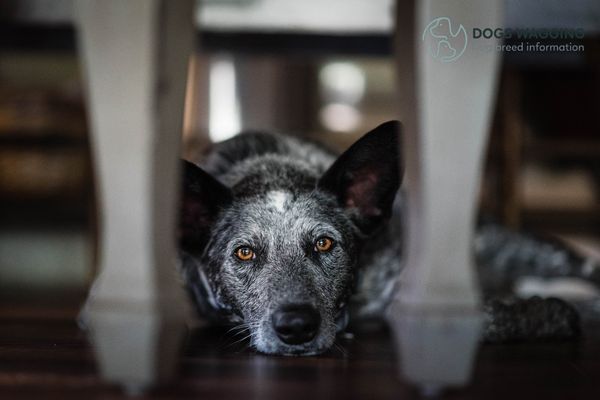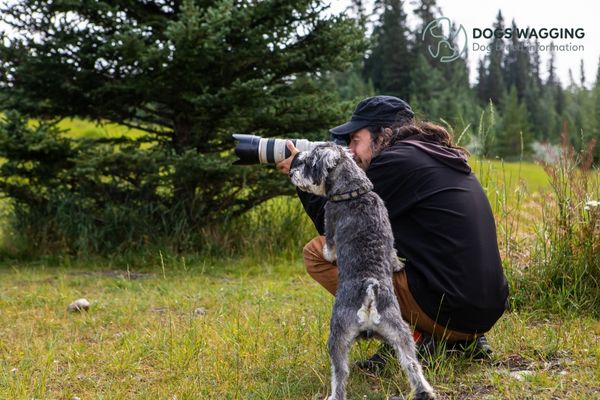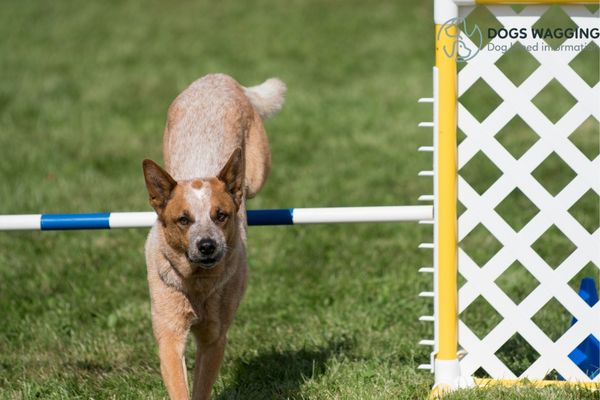John Switch • Tue Feb 27 2024
Australian Cattle Dog Behavior Issues You Should Know

What are Australian Cattle Dog Behavior Issues? - Australian Cattle Dogs are famous for behavioral issues, such as destructive behavior, nuisance barking, digging, jumping on people, and so on. These problems stem from a variety of causes, such as lack of exercise, mental stimulation, inconsistency in setting rules, and lack of socialization.
Australian Cattle Dogs, also known as Blue Heelers or Queensland Heelers, were initially bred to herd livestock in the harsh Australian outback. It is not surprising that they are intelligent, very active, and highly protective. These dogs require a lot of mental and physical activities to avoid harmful behaviors.
9 Common Australian Cattle Dog Behavior Issues
Chasing and Jumping: Australian Cattle Dog Behavior Issues
Because Australian Cattle Dogs were originally bred to herd cattle, they have a strong chasing instinct. They tend to chase cars, motorbikes, bicycles, animals, or other moving objects if they see them.
Jumping on people can be a common behavioral problem with Blue Heelers. Especially if Australian Cattles jump on small children or older people, they can easily knock them over.
These actions can make you uncomfortable and confused, unintentionally causing harm or injury to yourself or others. Specifically, when they chase or jump on you, their claws can cause scratches and damage your skin.
Destructive Behavior: Australian Cattle Dog Behavior Issues
Australian Cattle Dogs are highly active dogs that need lots of physical exercise and mental stimulation. As a result, the Blue Heelers often cause destructive behaviors such as chewing, digging, running away, and others.
These usually happen because they are not getting enough exercise and mental stimulation, and they are frequently left at home alone without receiving people's attention and interaction. They may become bored, anxious, frustrated, and looking for an escape, causing these destructive acts.
Annoying Barking: Australian Cattle Dog Behavior Issues
Barking is one of the ways dogs communicate. However, Australian Cattle Dogs are alert, they tend to bark at the slightest sound or sight. Also, when they feel anxious or bored, they bark a lot. These will cause a lot of annoying noise for you, your neighbors, and passersby.
To reduce this condition, you can train them to "speak" on command and reward them for quiet behavior. Providing plenty of exercise and mental stimulation can also help reduce boredom. One thing to note is that you should not leave this dog breed unattended in the yard.
Hyperactivity
Blue Heelers are a high-energy breed, and it can be normal for them to become overexcited. Without adequate energy sources, they can become hyperactive and difficult to manage. Ensuring they get enough physical activity, mental stimulation, exercise, and learning how to calm their mind will help them calm down.
Strong Herding Instinct
Australian Cattle Dogs have a strong herding instinct, so they often bite people or other animals. This habit will cause a lot of harm, injury, and even death to you and others. Similar to the behavioral issues above, providing your dog with plenty of exercise and mental stimulation can also help reduce their herding need.
Prone to Anxiety
Australian Cattle Dogs are very sensitive, fearful, and anxious. They can be easily frightened by loud noises, strange people, or unfamiliar environments. This fear will significantly increase when they are left alone, in a small space, and separated from their owner.

To alleviate this condition, you should gradually provide your dog with a safe and comfortable environment and expose him to new things. If you are busy, you can ask friends, relatives, or neighbors - people they know- to look after your dog.
Aggression
Australian Cattle Dogs can be territorial and protective of their family. These traits are manifested by their aggressive behavior toward strangers or toward other dogs, cats, and animals.
Socialization is a key to preventing aggression, as this method allows your dog to acquaint with a variety of people, situations, and environments under control.
Continuous Licking
Australian Cattle Dogs tend to lick your face, feet, or skin. This habit is one of the ways to help them express their feelings and preferences, as well as their desire to be cared for. This action is adorable, but they can annoy you when they lick too much.
Stealing Food
They are often very greedy and obsessed with food. Therefore, they often engage in disruptive behaviors such as surfing counters, searching through trash cans, and rummaging through cupboards to find food.
How to Avoid Australian Cattle Dog Behavior Issues?
Exercise and Mental Stimulation
Australian Cattles are highly energetic working dogs, requiring a lot of exercise to burn off energy. Therefore, you should spend at least 2 hours a day with them to exercise and do physical activities such as walks, runs, hikes, and playtime. When you don't provide enough exercise, they will find other ways to release their energy, typically with behavioral problems such as barking, destructive behavior, and digging.
Not only do they need a lot of exercise, but Blue Heelers also need mental stimulation. You should let them play with interactive toys and puzzles. These activities can prevent them from falling into a state of boredom.
Positive Reinforcement
Australian Cattle Dogs are stubborn, so they respond well to positive reinforcement training rather than punishment or physical discipline. If they behave well, you should reward them, praise them, and show them affection. Moreover, consistent and patient training will help them maintain good behavior and prevent unwanted behavior.
Social Interaction
Socialization is critical to preventing aggression, fear, and anxiety in Australian Cattle Dogs. It will help if you regularly expose your dog to new people, animals, and environments in a controlled manner. This solution can help build confidence and reduce their stress and wariness of new things. In particular, you should start doing this when they are puppies.
Health Caring
Health issues such as pain or anxiety are also causes of behavior problems in Australian Cattle Dogs. If you suspect or detect any unusual signals, you should contact and meet a veterinarian to receive the best advice and conduct some necessary health tests for them. These will help you promptly resolve the medical condition of your furry companion.
Teaching Simple Commands
To get a well-behaved Australian Cattle Dog, you should teach your dog basic commands at a young age, such as sit, stay, and come. These little things can help prevent behavioral problems and affect their overall obedience.
Reduce Surrounding Triggers
Environmental factors, such as loud noises, other dogs, and people, are also causes of behavioral problems in Australian Cattle Dogs. You can manage these triggers by avoiding them or removing your dog from the situation and not leaving them alone for too long without any control.
Conclusion: Australian Cattle Dog Behavior Issues
Australian Cattle are high-energy dogs with a strong herding instinct, so they require a lot of physical and mental exercise, human interaction, and attention. If their needs are unmet, they may engage in destructive behavior such as nuisance barking, digging, jumping on people, herding behavior, separation anxiety, aggression towards strange things, and so on.
These behavioral problems can be avoided if you provide enough mental stimulation, socialize them, teach simple commands at a young age, and use positive reinforcement. In addition, you should regularly check for health problems and manage environmental triggers.

John Switch / Author
Hello this is a test author
Recent blog posts

John Switch • Thu Feb 22 2024
Akita Mix With Rottweiler: All Facts You Should Know
The Akita Mix With Rottweiler is a combination of purebred Akita and purebred Rottweiler. These dogs are very loyal, devoted, and intelligent. They require

John Switch • Fri Dec 29 2023
American Corgi: All Facts You Need to Know
An American Corgi are a mixed dog which is result of crossing two different breeds: the Cardigan and the Pembroke Welsh. Let's explore the allure of the Am

John Switch • Fri Feb 23 2024
All Things About Anatolian Shepherd: Traits, Health Cares
Do you want to know more about Anatolian Shepherd Dogs? They originated in Turkey, where they were bred to be protectors of shepherds' livestock. They are a

John Switch • Fri Feb 02 2024
Australian Shepherd Doberman Mix: Traits and Caring Tips
The Australian Shepherd Doberman mix is a large dog breed that is a cross between the Australian Shepherd and the Doberman. This dog breed perfectly combi
 The Australian Cattle is jumping on people
The Australian Cattle is jumping on people Australian Cattle Dog with annoying barking
Australian Cattle Dog with annoying barking The Australian Cattle Dog requires daily exercise and mental stimulation
The Australian Cattle Dog requires daily exercise and mental stimulation Teaching commands to reduce Australian Cattle Dog Behavior Issues
Teaching commands to reduce Australian Cattle Dog Behavior Issues